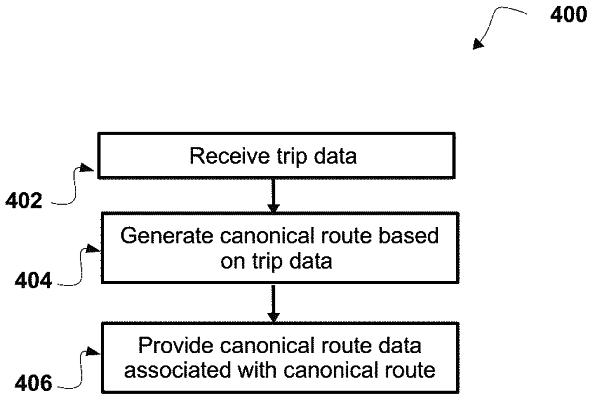| CPC G05D 1/0088 (2013.01) [G01C 21/3446 (2013.01); G05D 1/0217 (2013.01)] | 18 Claims |

|
1. An autonomous vehicle comprising:
one or more sensors for detecting an object in an environment surrounding the autonomous vehicle; and
a vehicle computing system comprising one or more processors, wherein the vehicle computing system is programmed or configured to:
receive canonical route data associated with a canonical route, the canonical route comprising a plurality of interconnected roadways in a geographic location, the plurality of interconnected roadways satisfying at least one condition based on trip data associated with a plurality of trips executed by a plurality of autonomous vehicles, a first trip of the plurality of trips describing a traversal of a first portion of the plurality of roadways in a geographic location by a first autonomous vehicle of the plurality of autonomous vehicles, and a second trip of the plurality of trips describing a traversal of a second portion of the plurality of roadways in the geographic location by a second autonomous vehicle of the plurality of autonomous vehicles, the at least one condition being based at least in part on a proportion of trips from the plurality of trips that are covered by the canonical route; and
control travel of the autonomous vehicle based on sensor data from the one or more sensors and the canonical route data associated with the canonical route.
|